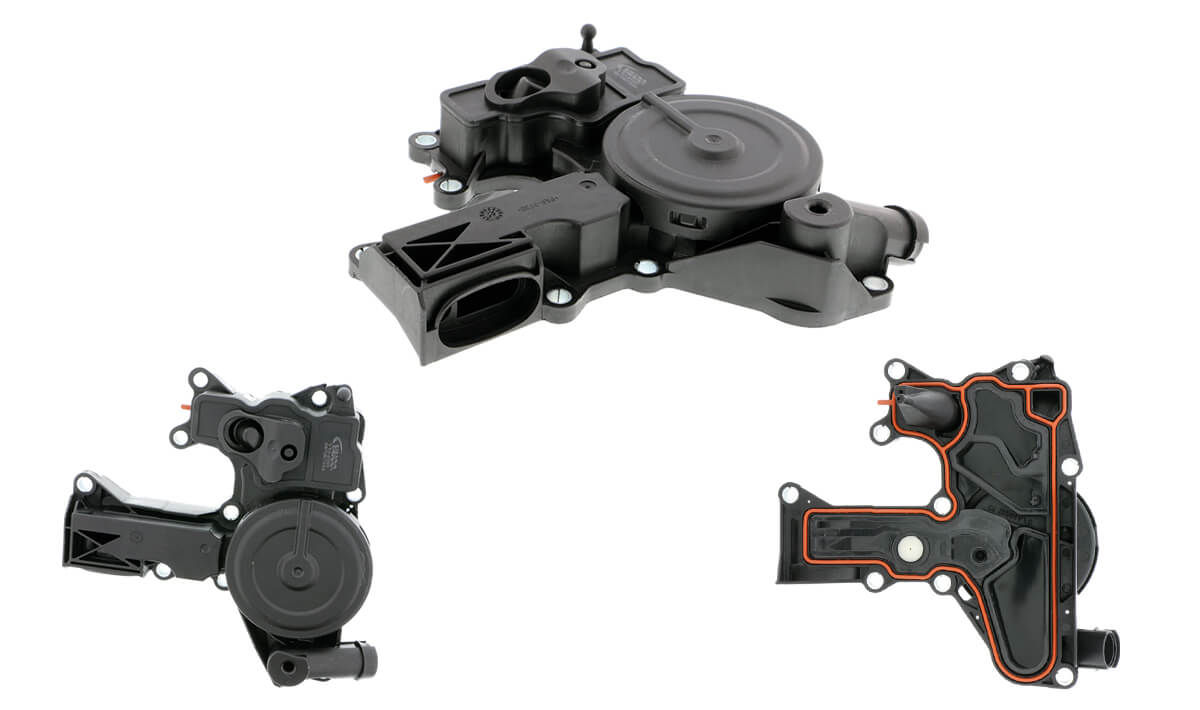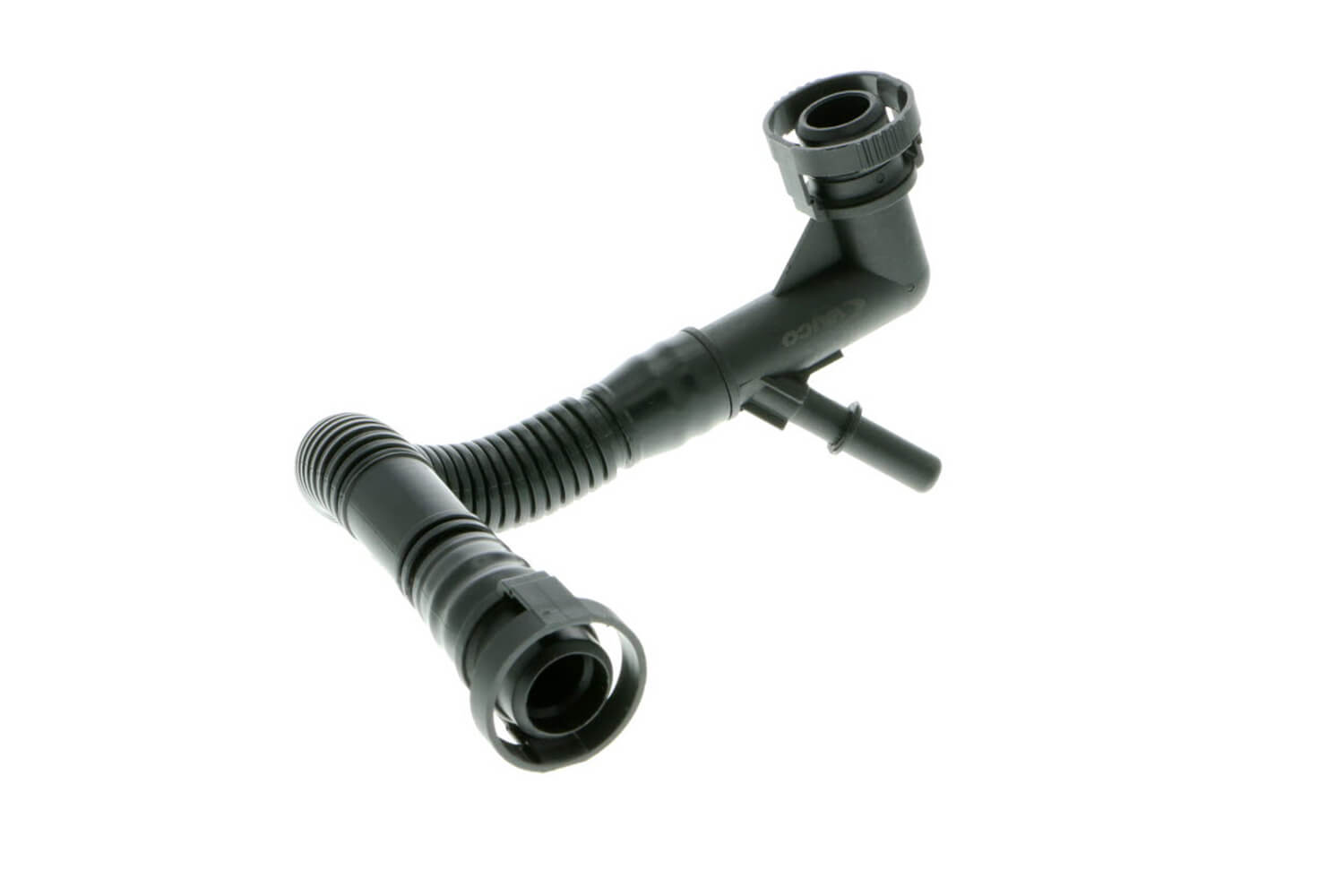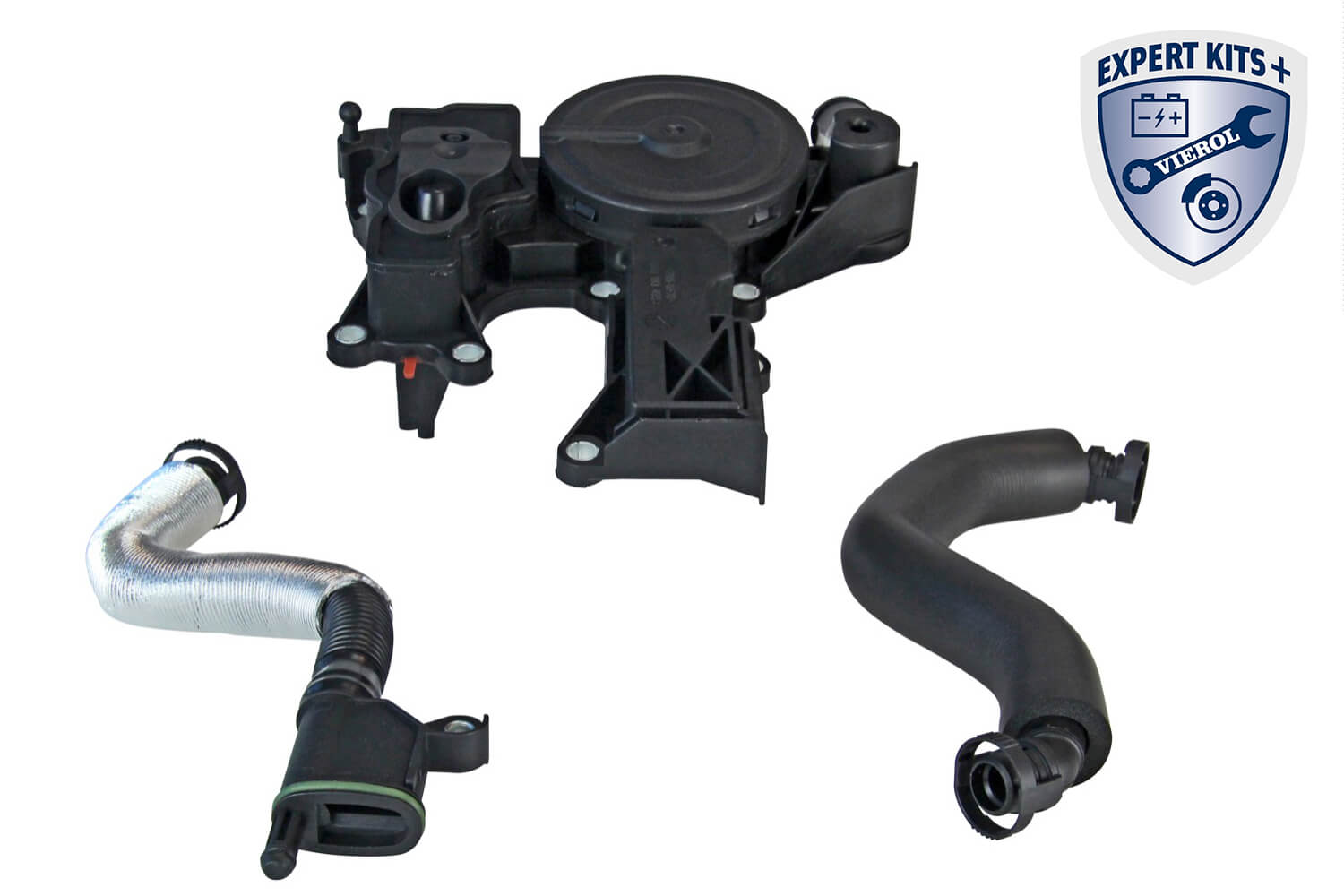VAICO Crankcase ventilation
VAICO's experts explain how the crankcase ventilation works and which symptoms indicate a defect. The quality brand VAICO offers a wide range of oil separators and ventilation hoses - also available as a practical repair kit from the category Expert Kit+.

These signs may mean that something is wrong with the exhaust system. Oftentimes, most repair shops will only replace the clogged valve or hose. However, why this may fix part of the issue, it oftentimes does not address the cause of the problem. It is therefore recommended to replace all of the ventilation components, such as valves, separators, and suction hoses, which are most likely attributing to the root cause. For this very reason, VAICO offers the widest range of repair kits consisting of valves and hoses for the most popular vehicle models, ensuring you are able to complete the entire repair.
Replacing just a hose is not enough!
VAICO’s wide range of Crankcase Ventilation
Oil Separators
- fluoric rubber seals alleviates potential leaking issues
- longer longevity thanks to friction and vibration welding processes
- OE quality diaphragms

Ventilation hoses
- quick and easy installation: Quick connectors Made in Germany
- genuine Quality: +100 hoses in OEM Quality
- 100% leakage and performance testing

Expert Kits+
- repair sets including ventilation hoses and matching valves
- ensure significant time savings in the identification and procurement of parts

 Failure Causes
Failure Causes
- clogging caused by sludge
- quick connectors wearing out
- effects of weather
- dirty hoses and/or traps
 Resulting damages
Resulting damages
- Engine performance declines significantly
- Failure of the turbocharger
- Engine damage
Background information
Gas forms in the engine during the combustion process. This gets into the crankcase where it will again be supplied with intake air. The valves in the exhaust system filter impurities from fuel residues, soot, and oil. The gas is cleaned here before it is fed with the engine’s intake air again. Without this cleaning, tar-like deposits may accrue in the intake passages of the turbocharger and other components. This can cause the turbocharger to fail, and in the worst case damage to the engine.
To avoid failure in advance, experts from the quality brand VAICO recommend changing hoses and the ventilation unit at the latest after 80,000 kilometres, or every third oil change. Tip: there are cold country versions for many lines and oil separators. The hoses are sheathed with insulation in that case. This is to avoid the risk of icing in winter.
Troubleshooting
You can unscrew the oil cap in order to check whether the valves, separators, and tubes have been affected. It is easy to tell: low suction pressure is normal – the components are working properly. If the suction pressure is high, in that you need to use force, the valve is defective. If the cap springs right off, this is caused by overpressure in the housing, meaning the oil separator is clogged.
Tips
- Check oil separators and ventilation hoses at every maintenance
- Replace components depending on the driving style, but at the latest every 60,000 kilometres
- To reduce the risk of icing, sheathed hoses should be used in cold winter countries









